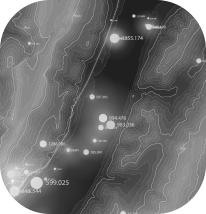AIRT
AI-Powered Ray Tracing by Atsmus
Atsmus’ AI Ray Tracing (AIRT) is a breakthrough technology, delivering unmatched accuracy in cellular signal analysis while drastically reducing computational complexity. Using advanced AI-driven algorithms, AIRT processes the integration of Digital Terrain Models (DTM) with high resolution 3D building polygons to provide precise evaluations of:
Signal Strength (RSSI)
Accurately predicting received power levels.
Signal-to-Noise and Interference Ratio (SINR)
Optimizing network performance.
Serving Cell Identification
Determining the best network connection for a given location.
Channel Impulse Response (Multipath Modeling)
Enhancing distance estimation and signal propagation accuracy.
By leveraging RF 3D modeling, AIRT accounts for reflections, diffractions, and environmental factors to ensure the most realistic and reliable signal predictions available today.

The Gaps in Traditional Ray Tracing
While ray tracing is the most accurate technique for RF propagation modeling, conventional methods face two major limitations:
Extreme Computational Demand
Traditional ray tracing requires analyzing tens of thousands of rays, making it impractical for large-scale, real-time applications.
Dependence on High-Resolution Environmental Models
Achieving accuracy requires detailed 3D descriptions of buildings, materials, trees, and dielectric properties—data that is often incomplete or unavailable.
These challenges make traditional ray tracing inefficient for modern network planning, where rapid and scalable solutions are critical.

How AIRT Delivers a Superior Solution
AIRT redefines RF propagation modeling by integrating AI to overcome the limitations of standard ray tracing. Its proprietary AI module (AIM) intelligently selects only a subset of the most impactful rays, drastically reducing computation while maintaining near-perfect accuracy.








